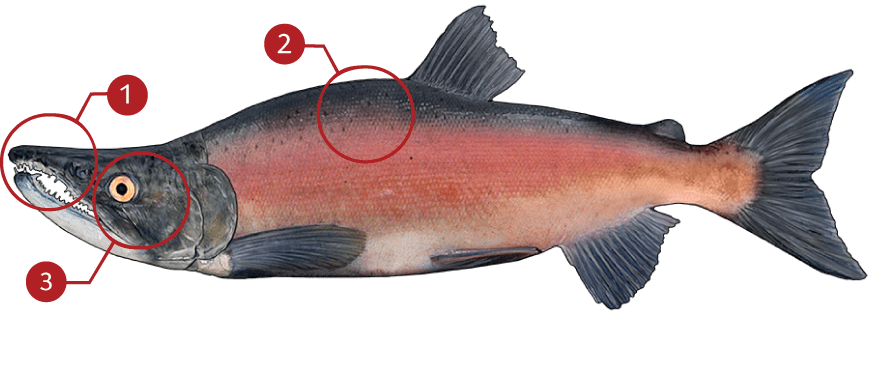SOCKEYE SALMON
How to identify a Sockeye Salmon
The body of breeding males is bright red with small black speckling (spots not large or distinct) on the back. The totally red body will distinguish the sockeye from the otherwise similar chum salmon, O. keta, and the lack of large distinct spots will distinguish it from the other three Pacific salmons.
Where to catch Sockeye Salmon
The sockeye salmon is endemic to the Pacific Ocean and its tributaries for Hokkaido in Japan to the Anadyr River, Russia, and from the Sacramento River, California to Point Hope, Alaska. Freshwater, non-migratory populations, known as kokanee, occur naturally in Japan, Russia, Alaska, Washington, Oregon and Idaho, the Yukon and British Columbia and have been introduced elsewhere, but largely unsuccessfully.
IDENTIFICATION

| | White gums and a black tongue |
| | Among the most dominant features on male sockeye salmon is the bright red coloration and non-distinct black dots |
| | Prominent gold-colored eye |
TARGET AREAS
|
|
Acknowledgements: We thank TAKEMEFISHING.org (www.takemefishing.org), Wisconsin Department of Natural Resources, Indiana Department of Natural Resources for their contributions to these FISH FACTS.

